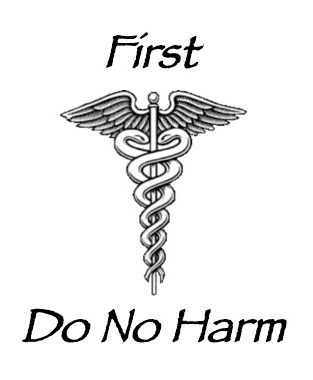Why do I need a prescription?
Posted by J Bergsten on 23rd Oct 2014

I am not going to rent you the CPM machine or SCD machine you want. Why you ask? Well, unfortunately, you do not have a prescription for the machine. Most of the Durable Medical Equipment (DME) we provide to be used in your home, must have a prescription from your doctor. Whether you are wanting a Continuous Passive Motion (CPM) machine, Sequential Compression Device (SCD) or Cold Therapy Machine, you could be putting yourself into harm’s way. Just like the Hippocratic Oath states, “First do no harm,” right? Even though, you, as the patient, know your body better than anyone else, your doctor knows when, and more importantly, when NOT, to use an SCD or CPM. These specific conditions are called contraindications. A contraindication is a medical condition that makes it counterproductive to use a CPM or SCD. While you may have a friend or family member who used one of these machines with great success, due to a condition you have, or the type of surgery being performed, it might not be the best idea for you. Here are some examples of why a prescription is imperative. Two examples for you:
1) Patient has Shoulder Surgery
Many patients, who have Rotator Cuff Repair (RCR) surgery or a shoulder manipulation, benefit greatly from using a shoulder CPM. The machine works to maintain their range of motion and decreases both swelling and pain in the joint. However, not all RCR patients should use a CPM. For instance, if a patient has had one of the rotator cuff muscles known as the subscapularis fixed, certain motions (external rotation) should be minimized for fear of causing the repair to fail. There are other types of procedures in which a CPM is contraindicated including most instability cases, Capsular Shift, a Bankhart Lesion repair, SLAP Repairs, or Laterjet Protocol. For these instability repairs to work, they need time to heal (often 6-8 weeks) and too much motion, whether active or passive, prior to healing, could actually pull the repair apart. If you do damage the repair it can lead to a second surgery. Let’s all agree, surgery is never much fun. And two surgeries are less fun than one.
2) ANY circumstance in which an SCD is desired
Sequential Compression Devices help to move blood throughout the body and work to prevent stasis (pooling of blood which can lead to clots). Many surgeries require the patient to be off their feet for a significant time after the surgery. In these circumstances, your doctor might prescribe you an SCD, especially if you are at higher risk of blood clot formation. The SCD will force blood through your venous system and keep it moving. As mentioned above, stasis can lead to blood clot formation. While SCD’s do a fantastic job of preventing clots from forming, they can cause issues if you already have a blood clot formed. Blood clots are not something you want to have and definitely not something to be taken lightly. If a blood clot breaks loose, it will travel through the body, and can cause a multitude of other issues such as stroke or pulmonary embolism, either of which can be fatal. Only your doctor can test you to see if you have a clot somewhere, which is why they must decide whether or not it is safe to use the SCD.
Here at The Medcom Group, we would much rather be overly cautious than to rent a machine to you and put your welfare at risk (rare but we won’t take the chance). Your safety and healing is our first concern as it is for your doctor. We will not put you further at risk. However, keep in mind, you have every right to ask your doctor to prescribe any of the machines we carry if you feel it will help with your recovery. We will even call your doctor for you if you don’t feel comfortable asking. In most cases, a doctor will be happy to write the prescription if it won’t do harm.
If you are not sure whether any of these machines would be right for you, call one of our patient care representatives at 877-301-4276.
